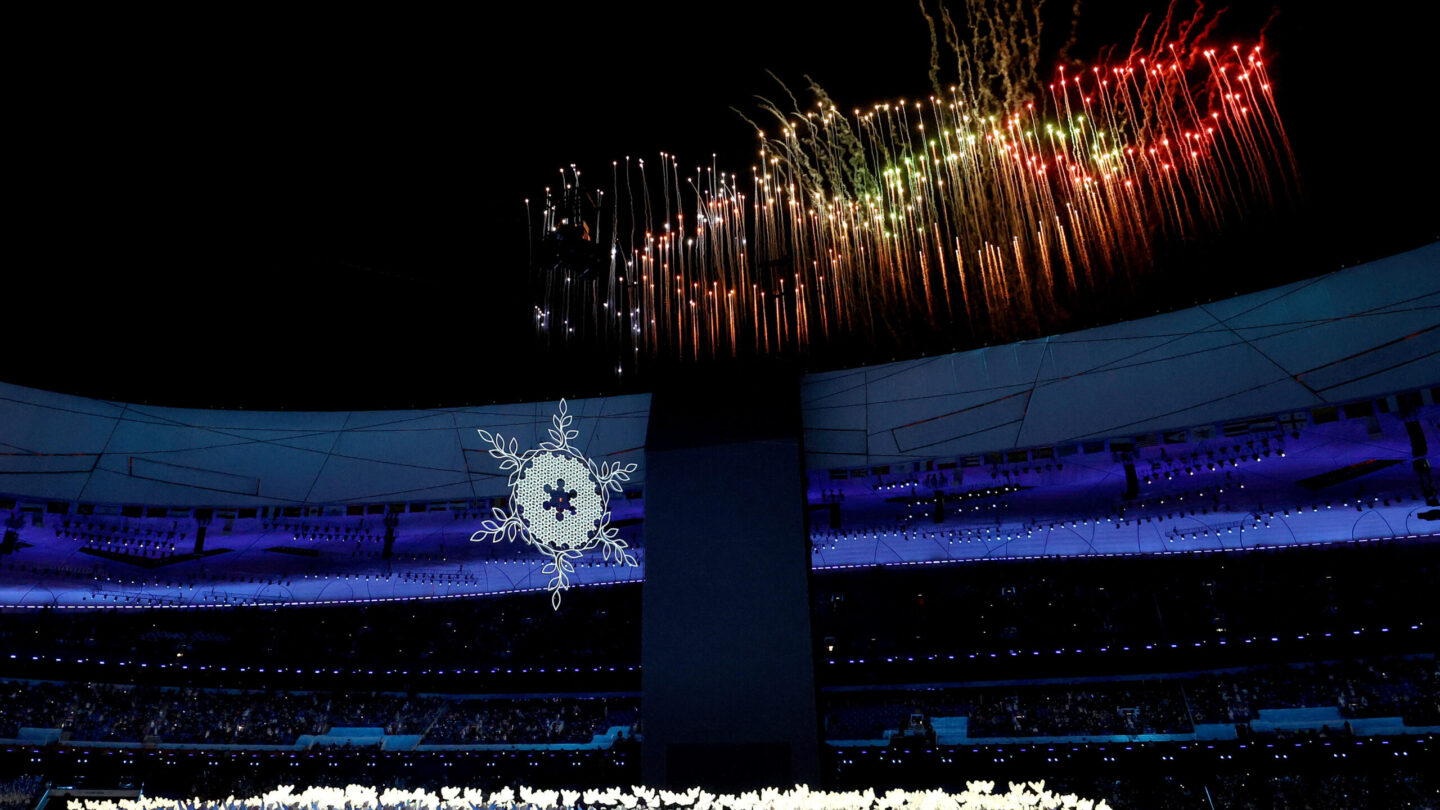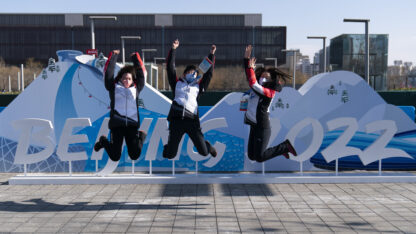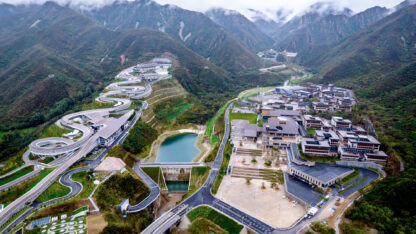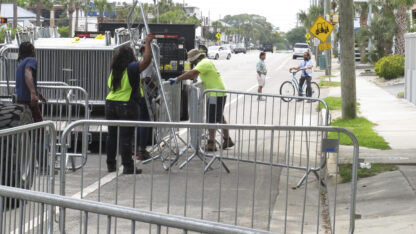The 2022 Winter Olympics open with a colorful but subdued ceremony in Beijing

Catherine Ivill / Catherine Ivill
BEIJING — Chinese organizers put on an eye-catching, if subdued, opening ceremony on Friday to officially begin the 2022 Winter Olympics.
It was the second time Beijing hosted an Olympic opening ceremony. On Friday, it made history as the first country to host both a Summer and a Winter Games.
As in 2008, China held the opening ceremony in Beijing’s open-air National Stadium, also called the Bird’s Nest. On Friday night, temperatures hovered around 25 degrees Fahrenheit in the stadium.
Compared to the 2008 spectacular, Friday’s event was noticeably toned down — likely due in part to COVID-19 — and shortened to about two hours and 20 minutes.
The ceremony’s organizers sought to emphasize togetherness — notably at a time when much of the world is very much apart due to the coronavirus pandemic. That separation stretches to the actual Games — which is occurring within a closed loop. Severe restrictions on athletes, media and other personnel require social distancing, mask-wearing and daily testing.
Beijing organizers brought in thousands of local residents to fill at least half of the stadium during the ceremony.
China’s President Xi Jinping was joined by Russian President Vladimir Putin, who he met with earlier in the day.
Putin’s presence offered a needed ally for China at a time when the nation continues to be dogged over criticism for its human rights record.
Absent Friday night were diplomats from the U.S. government, Great Britain, and other nations. They’ve labeled the treatment of China’s Uyghur minority as cultural genocide.
The International Olympic Committee, which faced its own criticism for holding the Games during a pandemic again, has maintained it will remain politically neutral.
Last summer, during the Tokyo Olympics, demonstrators gathered outside the opening ceremony arena, protesting Japan hosting the event during the pandemic.
No such protest occurred Friday night anywhere near the Bird’s Nest stadium. Surrounding city streets were blocked off, in part due to the closed loop the Olympics are operating under, and due to the city’s serious security measures in light of opening night.
U.S. flag bearer felled by coronavirus
The pandemic reality outside of the closed-loop was not addressed in the evening’s performances though some dignitaries, at times the dancers, and athletes wore masks.
The highlight of the evening was the 3,000 or so dancers in colorful costumes. The performers — a fraction of the 15,000 performers during the 2008 festivities — were nearly entirely made up of teenagers.
Despite their youth and the evening’s biting cold, China’s dancers executed precise, high-energy choreography throughout the night, particularly during the nearly hour-long parade of athletes.
The parade of athletes, which kicked with Greece, made up most of the night’s ceremony.
The path to getting to Friday night was a difficult one for each of the athletes marching. Each competitor that entered China had to follow a strict 21-day quarantine if they were unvaccinated. Vaccinated athletes still had to test negative on multiple coronavirus tests before coming.
Regardless of vaccination, some athletes tested positive after entering China –forcing them to be placed in isolation until they can test negative.
Veteran bobsledder Elana Meyers Taylor, who was meant to be a flagbearer for the U.S. during the opening ceremony, is still in isolation after testing positive two days after arriving in Beijing. Speed skater Brittany Bowe filled in for her and walked alongside John Shuster, a curler whose team won a surprise gold medal four years ago in Pyeongchang.
The 2022 Beijing Winter Games will continue until Feb. 20.
9(MDAxODM0MDY4MDEyMTY4NDA3MzI3YjkzMw004))








